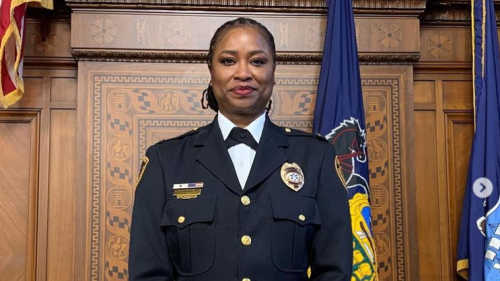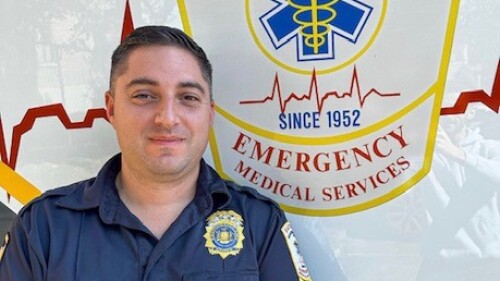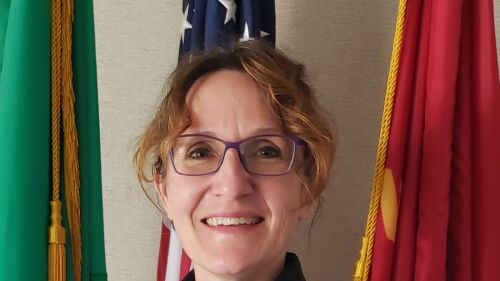In EMS, we spend a lot of time looking inward reviewing our own policies, auditing our own data and evaluating our own teams. But sometimes, the most powerful lessons come from looking outward. The California Ambulance Association’s Ready, Next LIVE! Leadership Development Tour was created based on that simple truth: to become a better leader, you must see how others do it.
From October 13-17, 2025, a group of California EMS leaders, managers and supervisors left their home agencies and hit the road for a 5-day journey across three of the nation’s most respected ambulance systems:
- Richmond Ambulance Authority (RAA) in Virginia
- Wake County EMS in Raleigh, North Carolina
- Medic Mecklenburg EMS Agency in Charlotte, North Carolina
Also joining the Tour were leaders from AIMHI members MEMS (Little Rock, Arkansas) and Pro EMS (Cambridge, Massachusetts)
The goal was not tourism — it was transformation.
A classroom without walls
The Ready, Next LIVE! program was designed to take leadership learning out of the conference hall and into the field. Each stop on the tour offered a structured, yet immersive format, a blend of operational tours, leadership roundtables and end-of-day reflection sessions that encouraged participants to turn observation into action.
In addition to myself, acting as CAA executive director, the faculty team guiding the journey included Jimmy Pierson (Medic Ambulance), Steve Grau (Royal Ambulance) and Matt Zavadsky (PWW Advisory Group). Together, we helped attendees draw connections between what they were seeing and what they could implement within their own systems back home.
At each site, participants were welcomed by the local leadership: CEO Chip Decker at RAA, Executive Director Jon Studnek at Wake County EMS, and Executive Director John “JP” Peterson at Medic Mecklenburg. Each host opened their operations with remarkable transparency, walking visitors through deployment models, communication systems, training programs and quality improvement processes.
“We didn’t just see facilities; we saw philosophies,” one participant reflected. “Every agency approached similar challenges — staffing, response times, community relationships — in different, creative ways. It was inspiring.”
Richmond: Precision and performance
The tour began at the Richmond Ambulance Authority, where Decker and his team demonstrated what true system design looks like in action. From the communication center to fleet management, RAA operates with a level of precision that reflects its decades of high-performance history.
Attendees were struck by RAA’s focus on accountability and data-driven operations, and how every detail, from vehicle readiness to crew deployment, feeds into a culture of continuous improvement. “RAA set the tone for the week,” one attendee said. “They showed us what operational discipline really means.”
| MORE: The human side of EMS: Culture, compassion and clinical courage
Wake County: Countywide collaboration
Next, the group traveled south to Wake County EMS in Raleigh, North Carolina, where Studnek and his team shared their system’s integrated approach to prehospital care. Wake County’s model, balancing centralized oversight with local flexibility, sparked valuable conversations about leadership structure, workforce development and technology.
Participants spent time seeing how data, clinical governance and professional development all come together. One participant noted “Wake County’s ability to merge analytics with compassion was something special. It reminded us that excellence isn’t just about response metrics — it’s about supporting the people behind them.”
Charlotte: People, purpose, progress
The final stop took the group to Medic Mecklenburg EMS in Charlotte, North Carolina, under the leadership of Peterson. If Richmond highlighted precision and Wake County collaboration, Medic embodied culture. The organization’s emphasis on staff wellness, leadership visibility and open communication left a deep impression.
“Medic’s team demonstrated what it means to lead with heart,” said a participant. “Their engagement with staff was genuine and consistent. It’s clear they put their people first, and it shows in their performance.”
The power of peer learning
What truly set Ready, Next LIVE! apart wasn’t just the access to high-performing systems; it was the dialogue among peers. Each evening, participants gathered to reflect on what they’d learned, identify ideas worth adapting and plan practical takeaways for their own agencies.
One attendee summed up the experience perfectly:
“Of all the structured EMS leadership and exposure training I’ve been part of, this was by far the best experience I’ve had. The ability to see, compare and learn from several high-functioning EMS agencies was outstanding. I came away with plenty to think about and a lot of exciting new ideas.”
The camaraderie and networking that developed during the trip were as valuable as the operational insights. The conversations that started on the bus, over coffee and during informal debriefs have continued long after the tour, and that was exactly the point.
A model worth repeating
Supported by the Academy of International Mobile Healthcare Integration (AIMHI), Ready, Next LIVE! was made possible through the generous sponsorship of ZOLL, Traumasoft, Life-Assist, and Stryker. Their partnership ensured that this innovative approach to leadership development could happen and happen right.
For many attendees, the biggest takeaway was that innovation doesn’t require invention, it often begins with observation. Seeing how another agency deploys, measures, motivates or mentors can spark a change that ripples throughout an organization.
Leadership development in EMS doesn’t always mean another PowerPoint deck or management seminar. Sometimes, it means getting on a plane, walking another agency’s bays, and asking, “How do you do it?”
Ready for what’s next
The Ready, Next LIVE! tour reminded us that readiness isn’t just about response; it’s about leadership. By visiting systems that are excelling in the art and science of EMS delivery, participants saw firsthand what’s possible when operational discipline meets innovation and people-centered leadership.
For those who couldn’t attend this year, the message is simple: get out there. Whether you’re a chief, supervisor or new manager, there’s no substitute for walking in another system’s shoes. The lessons you bring home will outlast the miles you travel.








